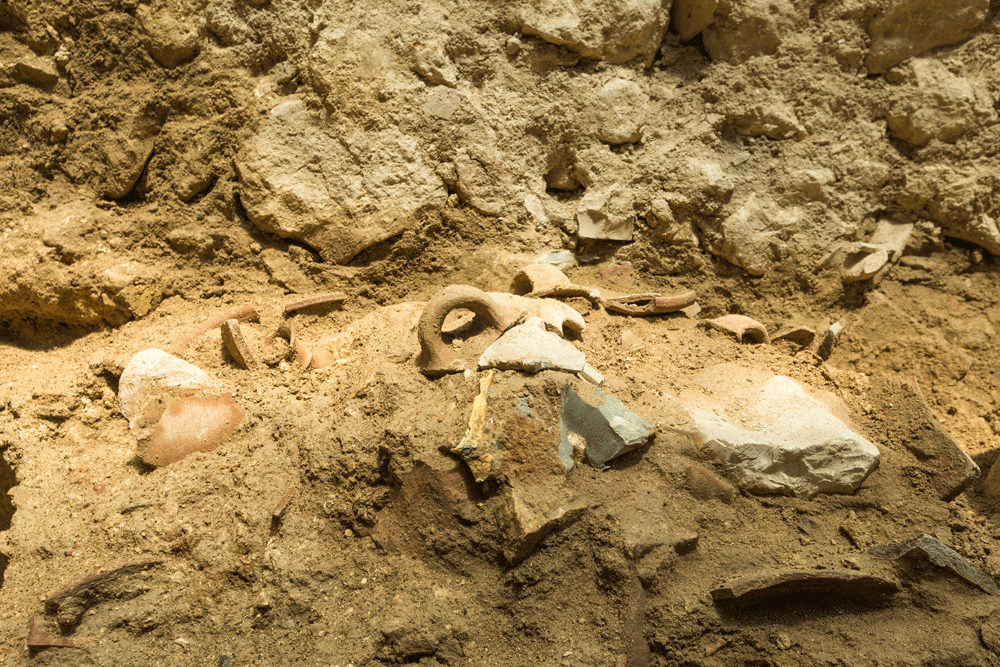By World Israel News Staff
A recent excavation conducted by the Israel Antiquities Authority in Jerusalem has unearthed evidence of an earthquake that took place in the city that was mentioned in the Bible.
The earthquake took place during the Kingdom of Judah period, about 2,800 years ago. The books of the prophets Amos, Zechariah and Ezikiel all mention “a great earthquake [that] shook the ground.”
The quake is believed to have caused major structural damage to the First Temple in Jerusalem, as was written: “A rent was made in the temple, and the bright rays of the sun shone through it; and fell upon the King’s face” (Antiquities of the Jews, Book IX 10:4).

Pottery as it was found in the City of David excavation site of the 8th century BCE earthquake mentioned in the Bible (Israel Antiquities Authority)
While the quake was previously exposed in several sites throughout Israel – including Hazor, Gezer, Tel Agol and Tell es-Safi/Gath – until now there was no archaeological evidence to prove that the earthquake reached Jerusalem, the capital of Judah.
“When we excavated the structure and uncovered an 8th century BCE layer of destruction, we were very surprised, because we know that Jerusalem continued to exist in succession until the Babylonian destruction, which occurred about 200 years later,” said Dr. Joe Uziel and Ortal Chalaf, directors of the excavations from the Israel Antiquities Authority.
“We asked ourselves what could have caused that dramatic layer of destruction we uncovered? Examining the excavation findings, we tried to check if there is a reference to it in the biblical text. Interestingly, the earthquake that appears in the Bible in the books of Amos and Zechariah, occurred at the time when the building we excavated in the City of David collapsed,” the researchers explained.
“The combination of the finds in the field together with the biblical description, led us to the conclusion that the earthquake that struck the Land of Israel during the reign of Uzziah king of Judah, also hit the capital of the kingdom, Jerusalem,” they added.
The excavations revealed a layer of destruction, which included a row of shattered vessels – bowls, lamps, cooking utensils, storage and storage jars – which were smashed when the building’s walls collapsed. Since no signs of fire were found, the researchers believe that this was not a deliberate event, but rather the effects of an earthquake that collapsed the building.
The public will be able to see the findings of the excavations at the “City of David Research” conference, which will be held at the Megalim Institute in September.






